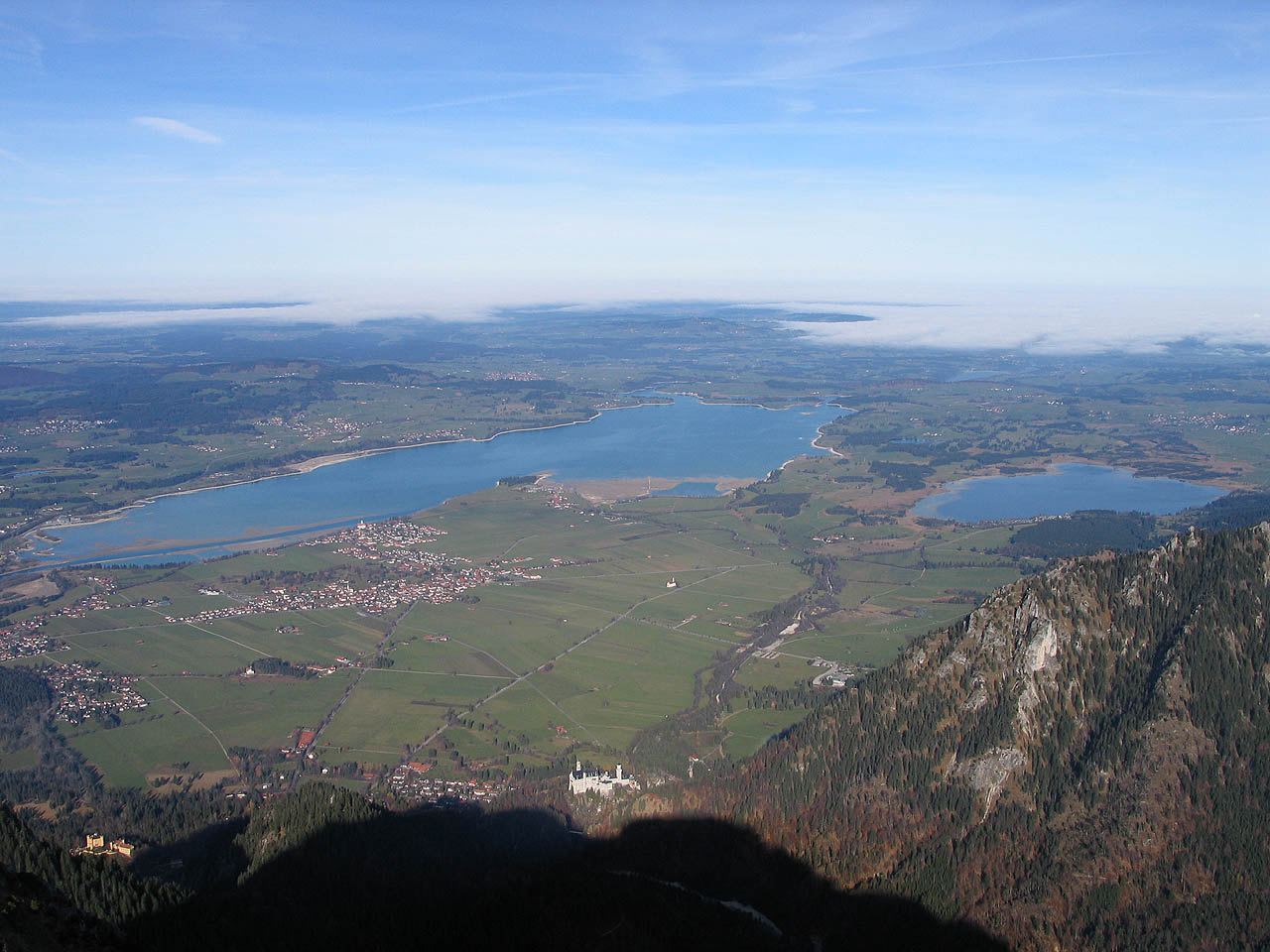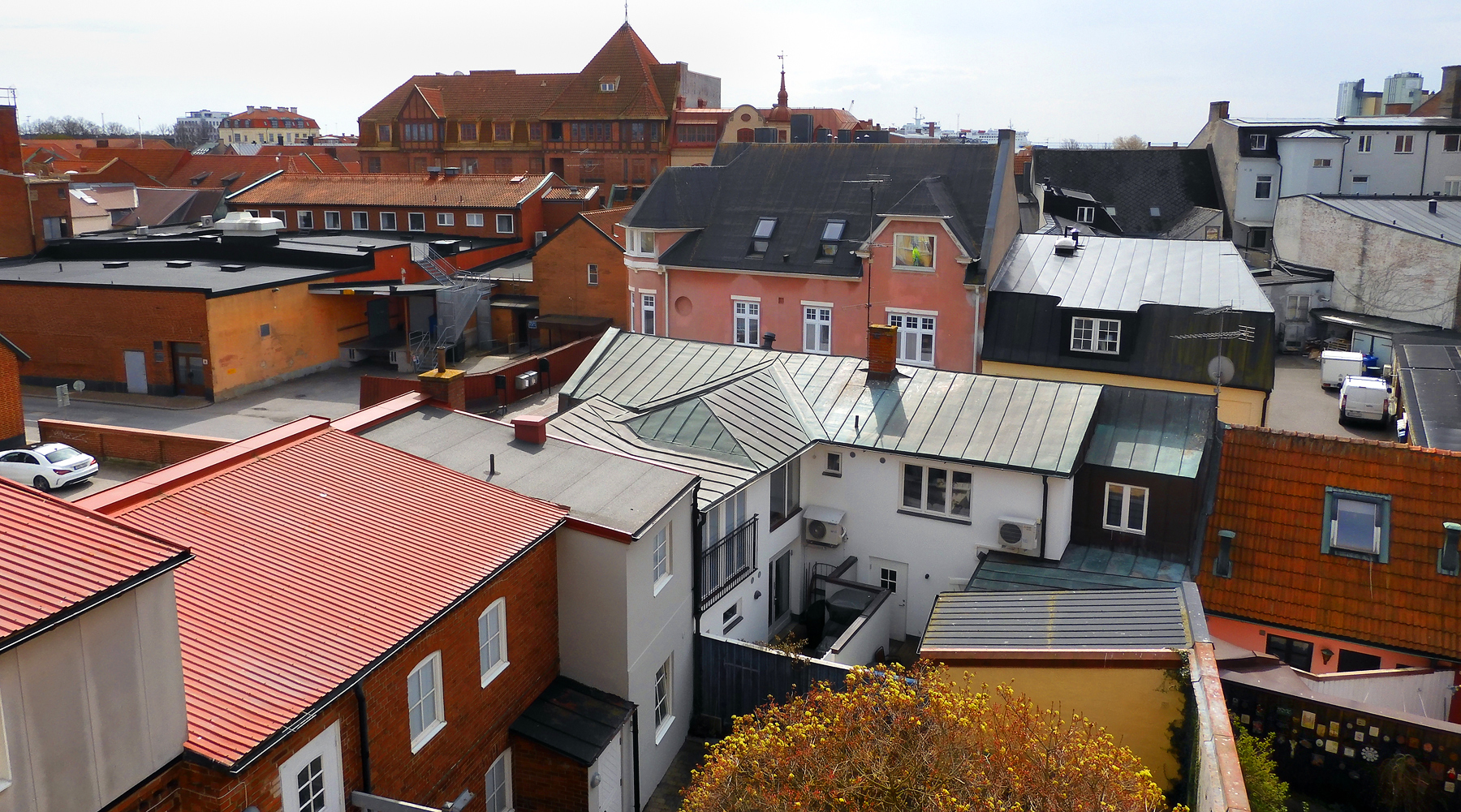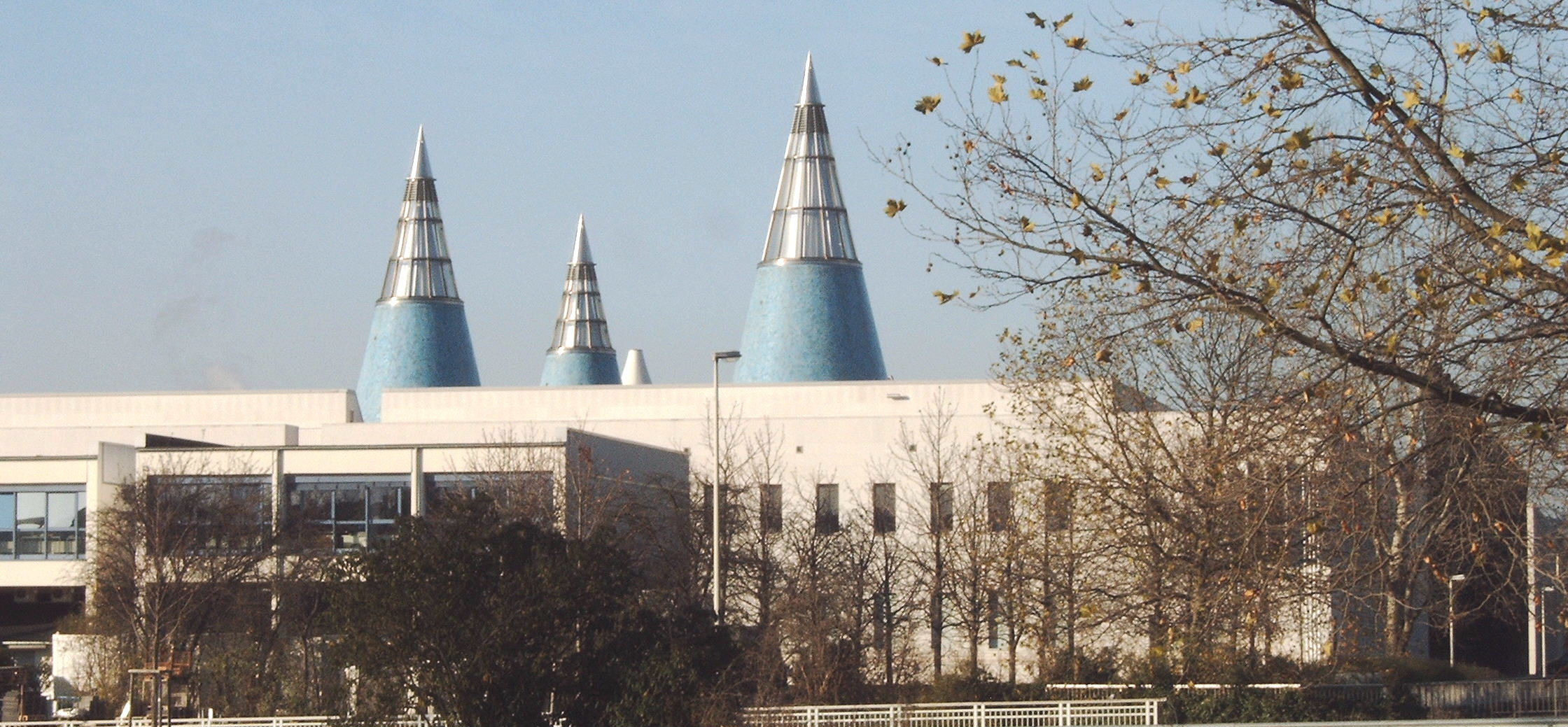|
Conical Roof
A conical roof or cone roof is a cone-shaped roof that is circular at its base and terminates in a point. Distribution Conical roofs are frequently found on top of towers in medieval town fortifications and castles, where they may either sit directly on the outer wall of the tower (sometimes projecting beyond it to form eaves) or form a superstructure above the fighting platform or terrace of the tower. The latter necessitated the use of spouts to lead the water away over the top of the walls (e.g. as at Andernach's ''Alter Krahnen''). In this case the cone roof was surrounded by a defensive wall, a parapet or a battlement. Such conical roofs were usually constructed using a timber-framed support structure covered with slate; more rarely they were made of masonry. A small circular turret or tourelle with a conical roof is called a pepperpot or pepperbox turret. Present Today, conical roofs are more often used in rural areas either for circular or small square buildings. They ... [...More Info...] [...Related Items...] OR: [Wikipedia] [Google] [Baidu] |
Svetitskhoveli Cathedral
The Svetitskhoveli Cathedral ( ka, სვეტიცხოვლის საკათედრო ტაძარი, ''svet'icxovlis sak'atedro t'adzari'' ; literally the Cathedral of the Living Pillar) is an Orthodox Christian cathedral located in the historic town of Mtskheta, Georgia (country), Georgia, to the northwest of the Georgian capital Tbilisi. A masterpiece of the Early Middle Ages, Early and High Middle Ages, Svetitskhoveli is recognized by UNESCO as a World Heritage Site. It is currently the second largest church building in Georgia, after the Holy Trinity Cathedral of Tbilisi, Holy Trinity Cathedral. Known as the burial site of the claimed Christ's Seamless robe of Jesus, mantle, Svetitskhoveli has long been one of the principal Georgian Orthodox Church, Georgian Orthodox churches and is among the most venerated places of worship in the region. Throughout the centuries, the cathedral served as the burial place for kings. The present cross-in-square structure was ... [...More Info...] [...Related Items...] OR: [Wikipedia] [Google] [Baidu] |
Neuschwanstein
Neuschwanstein Castle (, ; ) is a 19th-century historicist palace on a rugged hill of the foothills of the Alps in the very south of Germany, near the border with Austria. It is located in the Swabia region of Bavaria, in the municipality of Schwangau, above the incorporated village of Hohenschwangau, which is also the location of Hohenschwangau Castle. The closest larger town is Füssen. The castle stands above the narrow gorge of the Pöllat stream, east of the Alpsee and Schwansee lakes, close to the mouth of the Lech into Forggensee. Despite the main residence of the Bavarian monarchs at the time—the Munich Residenz—being one of the most extensive palace complexes in the world, King Ludwig II of Bavaria felt the need to escape from the constraints he saw himself exposed to in Munich, and commissioned Neuschwanstein Castle on the remote northern edges of the Alps as a retreat but also in honour of composer Richard Wagner, whom he greatly admired. Ludwig chose ... [...More Info...] [...Related Items...] OR: [Wikipedia] [Google] [Baidu] |
Andernach
Andernach () is a town in the district of Mayen-Koblenz, in Rhineland-Palatinate, Germany, of about 30,000 inhabitants. It is situated towards the end of the ''Neuwied basin'' on the left bank of the Rhine between the former tiny fishing village of Fornich in the north and the mouth of the small river Nette in the southeast, just north of Koblenz, with its five external town districts: Kell, Miesenheim, Eich, Namedy, and Bad Tönisstein. A few hundred metres downstream of Andernach the Rhine valley narrows from both sides forming the northern part of the romantic ''Middle Rhine'' stretch. Already in Roman times the place the narrow passage begins was named "Porta Antunnacensis" or ''Andernachian Gate''. It is formed by two hills, the ''Krahnenberg'' (engl. ''Crane hill'') and the ''Engwetter'' (''Narrow weather'') on the right bank near the wine village ''Leutesdorf'' (external town district of Bad Hönningen). The crane hill is named after the old crane beneath ... [...More Info...] [...Related Items...] OR: [Wikipedia] [Google] [Baidu] |
Fighting Platform
A fighting platform or terraceKaufmann, J.E. and Kaufmann, H.W (2001). ''The Medieval Fortress'', Cambridge, Massachusetts, Da Capo, p. 29. . is the uppermost defensive platform of an ancient or medieval gateway, tower (such as the fighting platform on a bergfried) and breteche. The fighting platform is surrounded by a parapet, usually a battlement. Whilst in warmer climates (for example in the Mediterranean region) the platforms were usually open, in Central Europe they were frequently covered by a roof structure (on towers by a spire or tented roof A tented roof (also known as a pavilion roof) is a type of polygonal hip roof, hipped roof with steeply pitched slopes rising to a peak.W. Dean EastmanHometown Handbook: Architecture./ref> Tented roofs, a hallmark of medieval religious archite ...). References Castle architecture {{castle-stub ... [...More Info...] [...Related Items...] OR: [Wikipedia] [Google] [Baidu] |
Eaves
The eaves are the edges of the roof which overhang the face of a wall and, normally, project beyond the side of a building. The eaves form an overhang to throw water clear of the walls and may be highly decorated as part of an architectural style, such as the Chinese dougong bracket systems. Etymology and usage According to the ''Oxford English Dictionary'', ''eaves'' is derived from the Old English (singular), meaning "edge", and consequently forms both the singular and plural of the word. This Old English word is itself of Germanic origin, related to the German dialect ''Obsen'', and also probably to ''over''. The Merriam-Webster dictionary lists the word as ''eave'' but notes that it is "usually used in plural". Function The primary function of the eaves is to keep rain water off the walls and to prevent the ingress of water at the junction where the roof meets the wall. The eaves may also protect a pathway around the building from the rain, prevent erosion of the footi ... [...More Info...] [...Related Items...] OR: [Wikipedia] [Google] [Baidu] |
Castle
A castle is a type of fortification, fortified structure built during the Middle Ages predominantly by the nobility or royalty and by Military order (monastic society), military orders. Scholars usually consider a ''castle'' to be the private fortified house, fortified residence of a lord or noble. This is distinct from a mansion, palace, and villa, whose main purpose was exclusively for ''pleasance'' and are not primarily fortresses but may be fortified. Use of the term has varied over time and, sometimes, has also been applied to structures such as hill forts and 19th- and 20th-century homes built to resemble castles. Over the Middle Ages, when genuine castles were built, they took on a great many forms with many different features, although some, such as curtain wall (fortification), curtain walls, arrowslits, and portcullises, were commonplace. European-style castles originated in the 9th and 10th centuries after the fall of the Carolingian Empire, which resulted ... [...More Info...] [...Related Items...] OR: [Wikipedia] [Google] [Baidu] |
Fortifications
A fortification (also called a fort, fortress, fastness, or stronghold) is a military construction designed for the defense of territories in warfare, and is used to establish rule in a region during peacetime. The term is derived from Latin ("strong") and ("to make"). From very early history to modern times, defensive walls have often been necessary for cities to survive in an ever-changing world of invasion and conquest. Some settlements in the Indus Valley Civilization were the first small cities to be fortified. In ancient Greece, large cyclopean stone walls fitted without mortar had been built in Mycenaean Greece, such as the ancient site of Mycenae. A Greek '' phrourion'' was a fortified collection of buildings used as a military garrison, and is the equivalent of the Roman castellum or fortress. These constructions mainly served the purpose of a watch tower, to guard certain roads, passes, and borders. Though smaller than a real fortress, they acted as a bor ... [...More Info...] [...Related Items...] OR: [Wikipedia] [Google] [Baidu] |
Medieval
In the history of Europe, the Middle Ages or medieval period lasted approximately from the 5th to the late 15th centuries, similarly to the post-classical period of World history (field), global history. It began with the fall of the Western Roman Empire and transitioned into the Renaissance and the Age of Discovery. The Middle Ages is the middle period of the three traditional divisions of Western history: classical antiquity, the medieval period, and the modern period. The medieval period is itself subdivided into the Early Middle Ages, Early, High Middle Ages, High, and Late Middle Ages. Population decline, counterurbanisation, the collapse of centralised authority, invasions, and mass migrations of tribes, which had begun in late antiquity, continued into the Early Middle Ages. The large-scale movements of the Migration Period, including various Germanic peoples, formed new kingdoms in what remained of the Western Roman Empire. In the 7th century, North Africa and the ... [...More Info...] [...Related Items...] OR: [Wikipedia] [Google] [Baidu] |
Roof
A roof (: roofs or rooves) is the top covering of a building, including all materials and constructions necessary to support it on the walls of the building or on uprights, providing protection against rain, snow, sunlight, extremes of temperature, and wind. A roof is part of the building envelope. The characteristics of a roof are dependent upon the purpose of the building that it covers, the available roofing materials and the local traditions of construction and wider concepts of architectural design and practice, and may also be governed by local or national legislation. In most countries, a roof protects primarily against rain. A verandah may be roofed with material that protects against sunlight but admits the other elements. The roof of a Conservatory (greenhouse), garden conservatory protects plants from cold, wind, and rain, but admits light. A roof may also provide additional living space, for example, a roof garden. Etymology Old English 'roof, ceiling, top, summ ... [...More Info...] [...Related Items...] OR: [Wikipedia] [Google] [Baidu] |
Cone
In geometry, a cone is a three-dimensional figure that tapers smoothly from a flat base (typically a circle) to a point not contained in the base, called the '' apex'' or '' vertex''. A cone is formed by a set of line segments, half-lines, or lines connecting a common point, the apex, to all of the points on a base. In the case of line segments, the cone does not extend beyond the base, while in the case of half-lines, it extends infinitely far. In the case of lines, the cone extends infinitely far in both directions from the apex, in which case it is sometimes called a ''double cone''. Each of the two halves of a double cone split at the apex is called a ''nappe''. Depending on the author, the base may be restricted to a circle, any one-dimensional quadratic form in the plane, any closed one-dimensional figure, or any of the above plus all the enclosed points. If the enclosed points are included in the base, the cone is a solid object; otherwise it is an open surface ... [...More Info...] [...Related Items...] OR: [Wikipedia] [Google] [Baidu] |
Bonn
Bonn () is a federal city in the German state of North Rhine-Westphalia, located on the banks of the Rhine. With a population exceeding 300,000, it lies about south-southeast of Cologne, in the southernmost part of the Rhine-Ruhr region. This metropolitan area, Germany's largest, is also the second largest in the European Union by GDP, with over 11 million residents. Bonn served as the capital of West Germany from 1949 until 1990 and was the seat of government for reunified Germany until 1999, when the government relocated to Berlin. The city holds historical significance as the birthplace of Germany's current constitution, the Basic Law. Founded in the 1st century BC as a settlement of the Ubii and later part of the Roman province Germania Inferior, Bonn is among Germany's oldest cities. It was the capital city of the Electorate of Cologne from 1597 to 1794 and served as the residence of the Archbishops and Prince-electors of Cologne. The period during which Bonn was ... [...More Info...] [...Related Items...] OR: [Wikipedia] [Google] [Baidu] |
Bundeskunsthalle
(Art and Exhibition Hall of the Federal Republic of Germany) is one of the most visited museums in Germany. Known as the ''Bundeskunsthalle'' for short, it is part of the so-called "Museum Mile" in Bonn. It holds exhibitions relating to art and cultural history from around the world. The museum is backed by the Federal Government and the States of Germany. The museum's director is Eva Kraus, a position she has held since 1 August 2020. Construction of the museum started in 1989 and was completed in 1992. The museum is located next to the Bonn Museum of Modern Art. Purpose The 'Bundeskunsthalle' aims to exhibit the intellectual and cultural wealth of Germany, as well as create opportunities for cultural exchange with other countries. It also aims to be a forum for dialogue between culture and politics. From the start, the museum was conceived as a platform for temporary exhibitions and events of national and international importance and as a place which enriches German cul ... [...More Info...] [...Related Items...] OR: [Wikipedia] [Google] [Baidu] |









